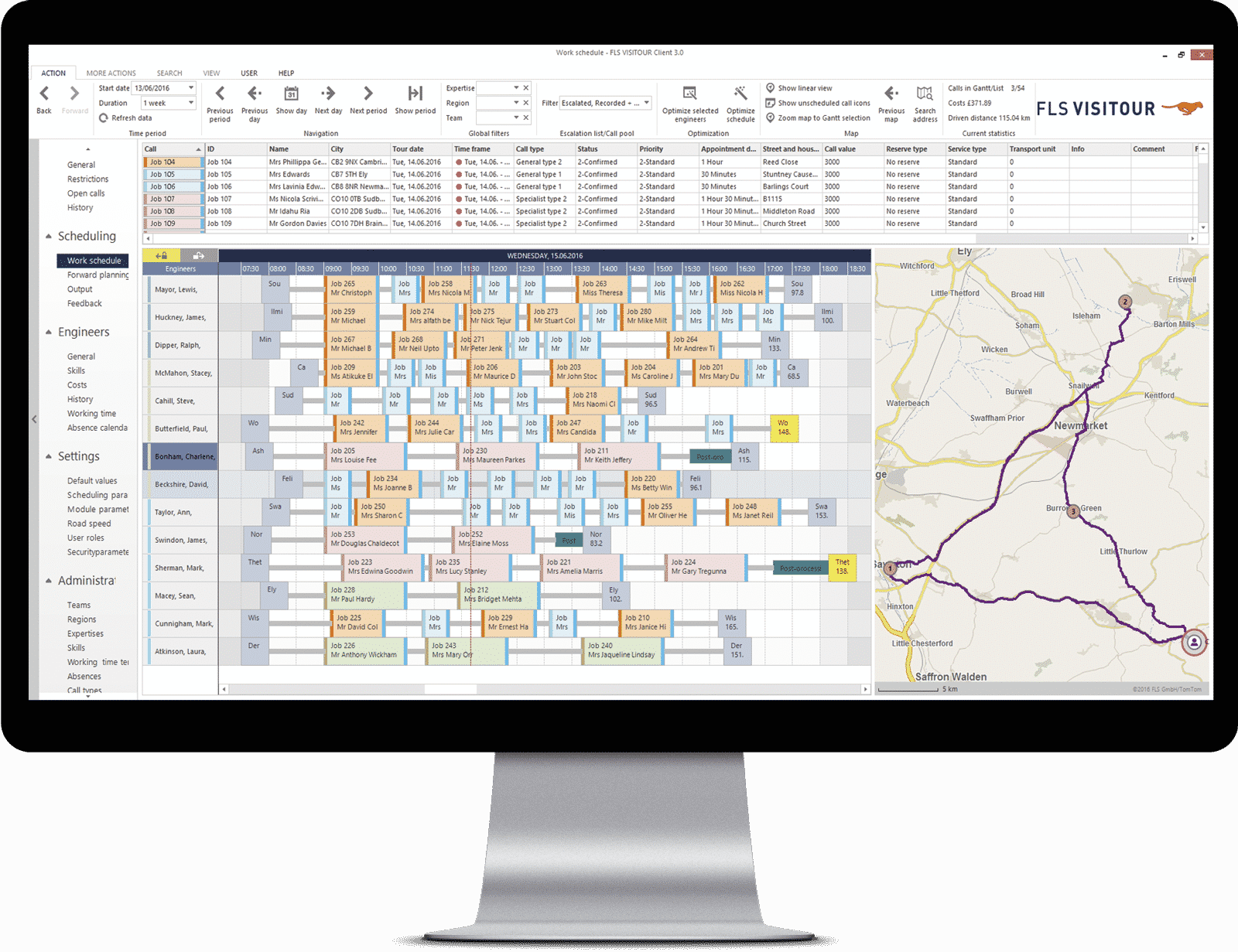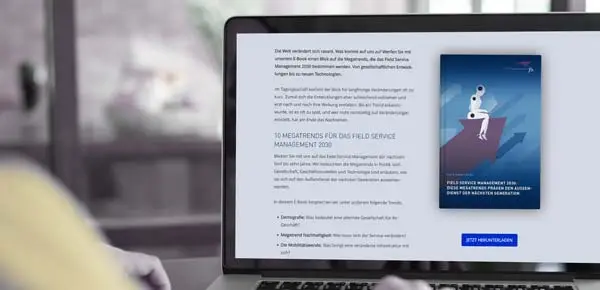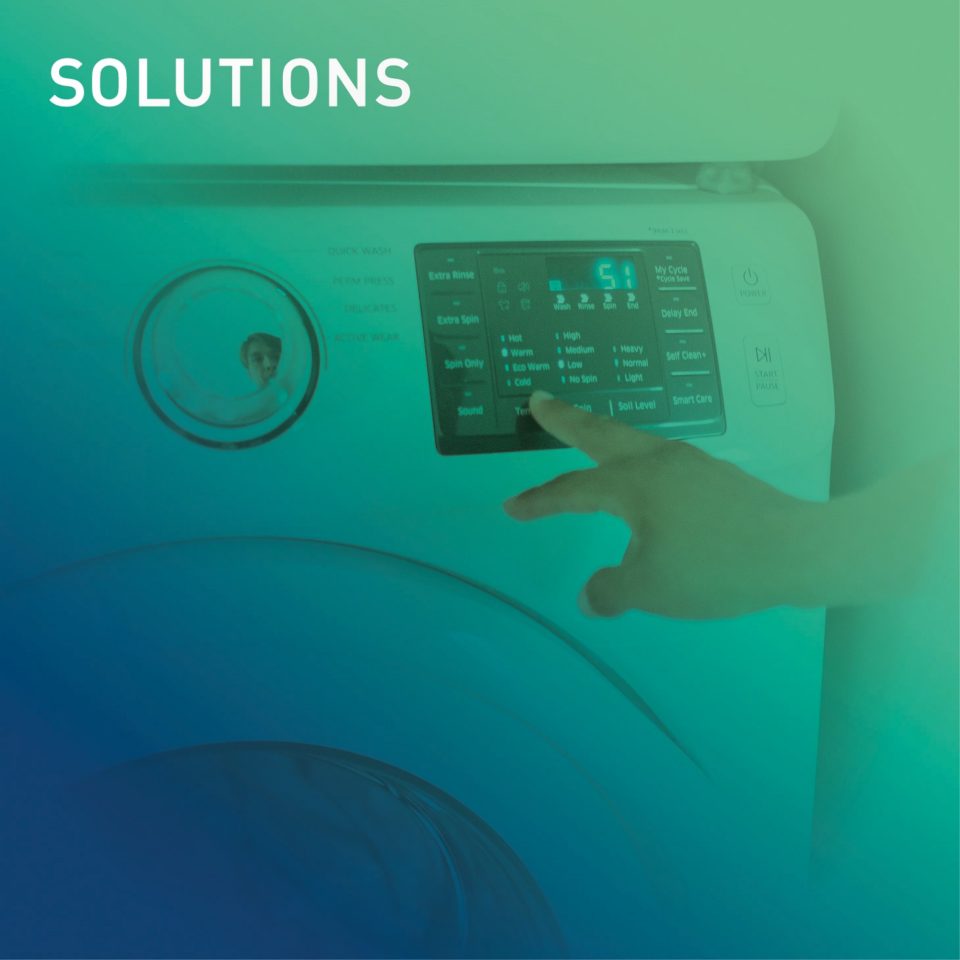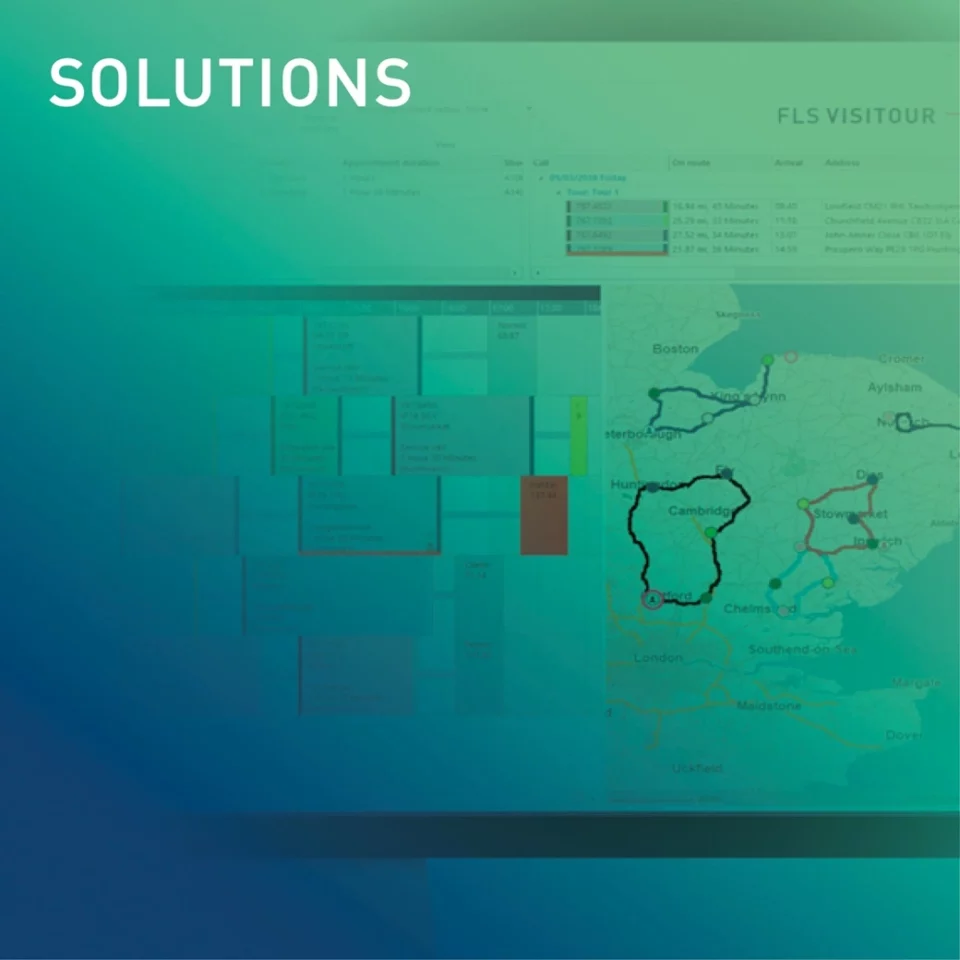
BLOG / SOLUTIONS · TOUR PLANNING & ROUTE PLANNING
TOUR PLANNING OR ROUTE PLANNING - WHAT'S THE DIFFERENCE?
17 August 2021 · Bettina Marksteiner
Few terms are more often confused or used synonymously than 'tour planning' and 'route planning'. But as we all know, the devil is in the detail. If you take a closer look at the exact meaning of the two terms, you will notice clear differences.
Both terms are to be assigned to transport and journey planning. Importantly, the terms do not only play a role for the planning of external service units, but also, for example, for the dispatch of materials or foodstuffs for the catering industry or the end consumer. Efficient route and tour planning can give employees in companies and the end customers a considerable advantage.
In the following article, we will look at the differences between route planning and tour planning.
WHAT MAKES ROUTE PLANNING?
A route is a component of tours and usually consists of a start address, one or more intermediate stops and a destination address. Most people will now probably think of personal TomTom navigation device or Google Maps. However, there are a few things to consider when planning a route:- Length of the route and estimated travel time
- Bypassing ULEZ/low emission zones
- Height of bridges and tunnels
- Maximum driving times of individual drivers and their break scheduling
WHAT MAKES TOUR PLANNING WORK?
Tour planning is much more extensive than planning a route. A tour includes several routes that are coordinated by it. Especially in larger companies that regularly deliver services with the help of several vehicles or schedule field staff, efficient tour planning is very important.The following data is important for planning a tour:
- The distribution of individual routes
- The most sensible loading of individual vehicles
- Traffic data
- Different skills of the employees
- Other restrictions such as vehicle height
Read more about the benefits of a route planning solution for your stakeholders ›
ROUTE AND TOUR PLANNING COMPARED
Here are the main differences:| What makes a tour | What makes a route |
|---|---|
| Consists of several routes and coordinates them with each other | Exact, ordered route between multiple points |
| Component of the task of dispatchers (planning) | Is part of the tour |
| Subject to restrictions (such as working hours or skills) | Determines a sensible sequence for stopovers |
With the help of this comparison, it quickly becomes apparent that a tour and a route are two completely different things that build on each other. Accordingly, there are also different restrictions to be taken into account during planning in order to achieve the best possible results.
TOUR OR ROUTE PLANNING SOFTWARE - WHICH DOES MY BUSINESS NEED?
Whether it is worthwhile to use a route planning software or a route planning software depends on the particular company and its needs. In general, the use of software facilitates internal coordination enormously and removes pressure from dispatchers, drivers, or field staff in the long run. With the right software, you can save money and make processes more efficient with little effort.Low complexity, low dynamics, hardly any restrictions, few ad hoc emergencies and breakdowns and simple routes from A to B indicate that route planning software is sufficient for your needs. Either field staff or dispatchers coordinate the route themselves as efficiently as possible or a special route planning software takes over this task.
Even though the benefits cannot be generalised, they increase with increasing planning complexity. In concrete terms, this means that the more people you have to coordinate and coordinate with each other at the same time, the greater the benefit of fully automated tour planning software.

NOW MEET REAL-TIME ROUTE AND TOUR PLANNING
To gain an understanding of tools to optimise the field experience and manage costs for your workforce and customers book a short discussion or contact us at info@fastleansmart.com.Read more:
Route scheduling: outpacing timesheets and Excel
Field service automation: next generation Field service
Interfaces: ERP and CRM integration in record time with API





